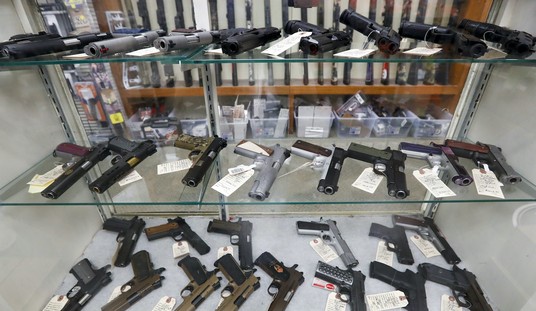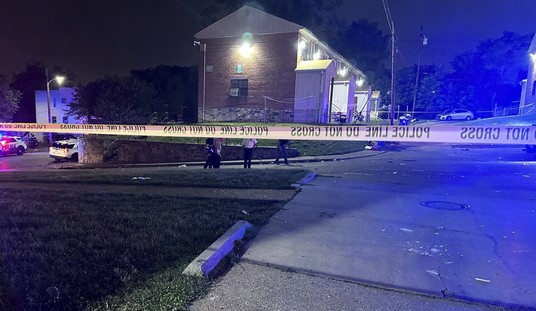Though the Alabama Sheriffs Association and its executive director have been vocal in their criticism of Constitutional Carry language (and the language of the Second Amendment itself), not every member is on board with the association’s opposition to the proposal.
Marshall County Sheriff Phil Sims, for one, says that ASA executive director Bobby Timmons “does not speak for us all,” which is good, considering that Timmons is partnering up with Moms Demand Action and has publicly declared that he’s in favor of changing the Constitution to limit the right of the people to keep and bear arms.
Sims describes himself as a “Republican conservative sheriff” who supports and defends the Second Amendment, and when it comes to Constitutional Carry, the law enforcement officer says he’s not opposed to Constitutional Carry in theory, though he would like to see some changes in the bills that have been introduced in the state House and Senate.
Specifically, Sims would like to see Alabama law changed to preclude anyone convicted of a felony offense from legally owning a firearm. Right now state law prohibits only those convicted of “violent felonies” from doing so, though federal law bars all felons (and domestic violence misdemeanants) from possessing a firearm or ammunition. Sims also wants Constitutional Carry language to address the fact that if there are fewer concealed carry licenses in the state, sheriffs’ departments are going to take a fiscal hit.
Pistol permits are $10 a year and the revenue greatly helps law enforcement, Sims said. If the permits were dropped, that revenue would then have to come from somewhere else.
“The pistol permit fees go into a discretionary account that is audited by the the Public Examiners of the State,” he said. “Those funds go to things like training, guns, ammo, sending deputies to the academy, vehicles sometimes, new training facilities and even a new firing range we’ve never had.
“My goal is to see that the permits remain, if nothing else, as voluntary. I think citizens would buy a permit and want to continue to support their local law enforcement,” Sims said.
The good news for Sims is that neither the House or Senate permitless carry bills would do away with the current licensing system, though I wouldn’t be surprised if there were fewer people applying if Constitutional Carry takes effect. But frankly, the much needed funds for these departments shouldn’t be coming from fees applied to the exercise of a constitutionally-protected right, and whatever funding mechanism is used should apply to the general public and not just gun owners.
Sims says his biggest issue with Constitutional Carry is the ability (or lack thereof) to take guns away from those prohibited from possessing them. Rep. Shane Stringer, who’s the chief sponsor of the Constitutional Carry bill in the House, says the Alabama legislature has already approved the creation of a prohibited persons database that law enforcement could access, but accused anti-Constitutional Carry sheriffs of pressuring the Alabama Law Enforcement Agency to slow walk the database’s construction.
“[I]’m getting word that some of the sheriffs are putting pressure on ALEA to slow this database down,” Stringer said. “You know, that concerns me. That doesn’t sound like someone who is concerned with officer safety or community safety if they’re trying to slow a tool down that could potentially save lives and save officer lives.”
When pressed, the Mobile County Republican lawmaker said the pressure campaign on ALEA was in the form of calls from sheriffs and other permitless carry opponents to high-ranking ALEA officials.
Stringer likened the tactics he claimed were being used by sheriffs opposing the bill to something out of the “Democrat playbook.”
“There’s a lot of sheriffs who support this bill, this law, and have reached out to me to let me know that,” he said. “You know, the only thing that I have seen come out from the sheriffs’ association was when the law enforcement officer up in Wilcox County was killed a couple of months before Christmas. The sheriffs’ association sent out an email making an issue of his death and relating it to this bill. But that deputy was shot and killed with a long gun, which has nothing to do with permits or this bill.”
Sounds to me like if Sims wants to earn his stripes as a pro-Second Amendment sheriff, he can start by calling out any of his colleagues who are trying to keep this database offline in order to maintain the status quo on permitting requirements. Sheriff Sims argues that opponents of permitless carry like Bobby Timmons don’t speak for him, but if that’s the case, it just means it’s time for Sims to start speaking up loud and clear in support of the right of the people to bear arms without a government permission slip.
One final note: I recently heard from 2A advocate Bill Cawthon, who works with the Texas State Rifle Association. Bill crunched some numbers in a couple of states; one that passed Constitutional Carry and one that imposed universal background checks and a magazine ban instead. What he found should give those anti-Constitutional Carry sheriffs some food for thought.
In 2010, Arizona adopted constitutional carry. Comparing the weighted average violent crime rates, murder rates, and aggravated assault rates of the ten years prior to and including 2010 (2001-2010) to the ten years after (2011-2020) we find that the violent crime rate was 8.2% lower after the change; the murder rate dropped 22.5% and the aggravated assault rate dropped 4.1%.
In 2013, Colorado enacted a universal background check law and imposed restrictions on magazine capacities. Comparing the weighted average of the rates of violent crime, murder, and aggravated assault in the seven years prior to and including 2013 (2007-2013) to the seven years after (2014-2020) we find the violent crime rate increased by 12.0%, the murder rate rose 22.5% and the aggravated assault rate was up 8.7%.
To make a more equitable comparison, I adjusted for the same time periods, 2007-2013 and 2014-2020, for both states. Compared to the figures shown for Colorado in the preceding paragraph to the figures for the same periods in Arizona, we find that Arizona’s violent crime rate rose 4.6%, the murder rate fell 12.1% and the aggravated assault rate rose 13.8%, the only measure in which Colorado was lower.
In Arizona, 131 fewer people were murdered from 2014 to 2020 than from 2007-2013. In Colorado, 331 more people were murdered after Colorado enacted its new gun control laws than in the same time period before.
There’s a lot of fearmongering surrounding Constitutional Carry, but if Alabama politicians (including elected sheriffs) stick with the facts, there’s no reason for them to oppose it.









Join the conversation as a VIP Member